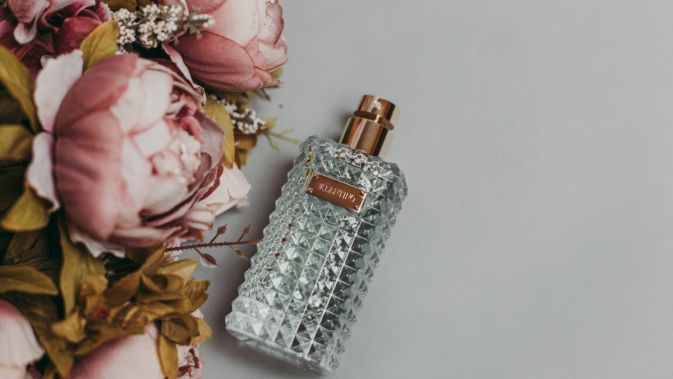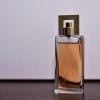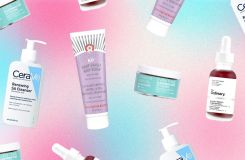
Perfume can be one of the most fun and enticing parts of your cosmetic routine, since it evokes sensual memories and helps to establish your personal style. However, there is an art to applying perfume that is based on tried and proven practices and is anchored in chemistry. Perfumers and fragrance experts offer advice on how to apply perfume appropriately, as well as what to avoid to keep your scent fresh.
Some Do's & Dont's of Applying Perfume
Do: Apply To The Skin Directly
Your skin is the ideal canvas for your preferred fragrance. “Perfume needs a suitable medium to anchor itself in order to properly unravel itself in the most heavenly way,” explains Matthew Milèo, a chemist and former in-house fragrance expert for Chanel, as well as the founder of Milèo New York, a luxurious oud-based skincare line. “Skin’s lipophilic (oil-loving) qualities make it the ideal medium for perfume oils to adhere to,” says Matthew Mileo. Furthermore, “the unraveling process begins with the warmth of the skin, and the aroma is free to fully reveal itself.”
Layer perfume over body lotion or oil for even more intense scent-to-skin adherence. “Fragrance clings to your skin’s oils, so using it after your body lotion or oil creates a better surface for the aroma molecules to bond to,” says Melina Polly, Henry Rose’s CEO and Co-Founder. “When your skin is hydrated, fragrance lasts the longest, so spritz shortly after your shower or bath.”
Don’t: Use it on Your Hair
“An alcohol-based solution tends to dry and damage the hair,” advises Bvlgari Parfums’ Senior Creative Director, “so don’t use an eau de toilette in your hair.” If you insist on spritzing your locks (after all, who doesn’t want their hair to smell good? ), make sure it’s a non-alcohol-based aroma.
“I love spritzing a bit in my hair because our Catbird perfumes are water based,” explains Rony Vardi, Founder and Co-Creative Director of Catbird, a Brooklyn-based jewelry business that introduced its own scent last fall.
Do: Apply to Pulse Points
When it comes to perfume application, it’s important to hit all of the appropriate locations. Milèo advises choosing parts of the body that are naturally warm and moist, such as the insides of the elbows, backs of the knees, chest, and sides of the neck. “The perfume can be fully appreciated in these regions. If you don’t, the top notes will fade too rapidly, leaving you with either a strong aroma or one that smells stiff and dead.”
Ascention’s founder, Greta Fitz, advises consumers to adopt a delicate application approach. “Use your scent to dab on pulse points. As a natural diffuser, your body heat will activate it throughout the day.”
Don’t: Rub Into Skin
Resist the urge to smear scent on your skin. Carina Chaz, who grew up in a lab and founded her unisex scent line, DedCool, in 2016, adds, “Fragrance application can be delicate.” “Fragrance should be left on the skin for a few minutes so that it can mingle with your natural oils. Top notes fade and disappear as wrists are brushed together.”
“You’re missing out on the overall experience because you’re rubbing away, or drying up a lot of the perfume,” Fitz says of rubbing your fragrance.
Do: Take a Walk Through a Fragrance Cloud (With a Catch)
“Some people may enjoy strolling into a haze that has been sprayed before putting on their garments. This helps one to become completely involved in the scent “Pallez agrees. For the wearer, this can be a romantic experience, and it can make your morning routine more joyful. Make sure your perfume isn’t harmful, though.
“Traditional fragrance is a pollution, so you should never inhale it. “Make sure you’re using a biodegradable fragrance if you want to stroll into a smell cloud,” Chaz says.”
Don’t: Be Afraid to Mix and Match Scents
Scent layering is an art form in and of itself. Fitz explains, “We can overlay with a complementary aroma to renew the scent without dominating it.” “Single note perfumes, such as a powdered musk, are the finest for rejuvenating our olfactory palette to our preferred smell.” Avoid mixing a strong scent with another strong scent, since this is simply too much and can give you and those around you migraines.
Layer strong perfumes with single note woody or musky aromas to envelop the smell in earthy undertones if you like big fragrances but want a new perspective on them. I’d avoid anything strongly fruity since, depending on what they’re mixed with, fruits might be overbearing or volatile.”
Do: Use on Clothing
Many people enjoy putting perfume on their clothes. “I like to mist my coat every now and then to battle that winter mustiness,” explains Leigh Plessner, Catbird’s Co-Creative Director. If this describes you, simply pay attention to the fabric composition of your outfit.
“If you can wash the garment, spray away,” Fitz adds, adding that you should avoid materials like silk, which may be damaged easily by perfume oils. “Wave the fabric in the mist to ensure even covering.”
It’s also worth noting that spritzing clothing may not give you the full effect of the scent. “Because of the nature of the fabric, it only collects specific components of the scent and not the complete symphony,” Milèo explains, “fragrances on clothes can smell more powdered.” So go ahead and spritz your clothes with your distinctive aroma, knowing that the olfactory experience will be different from when you apply perfume to your skin correctly.
Was this helpful?
Kingerlon collects & utilizes cookies from third-parties & affiliate networks to improve user experience. If you buy a product or service after clicking on one of our links, we may get a commission.










